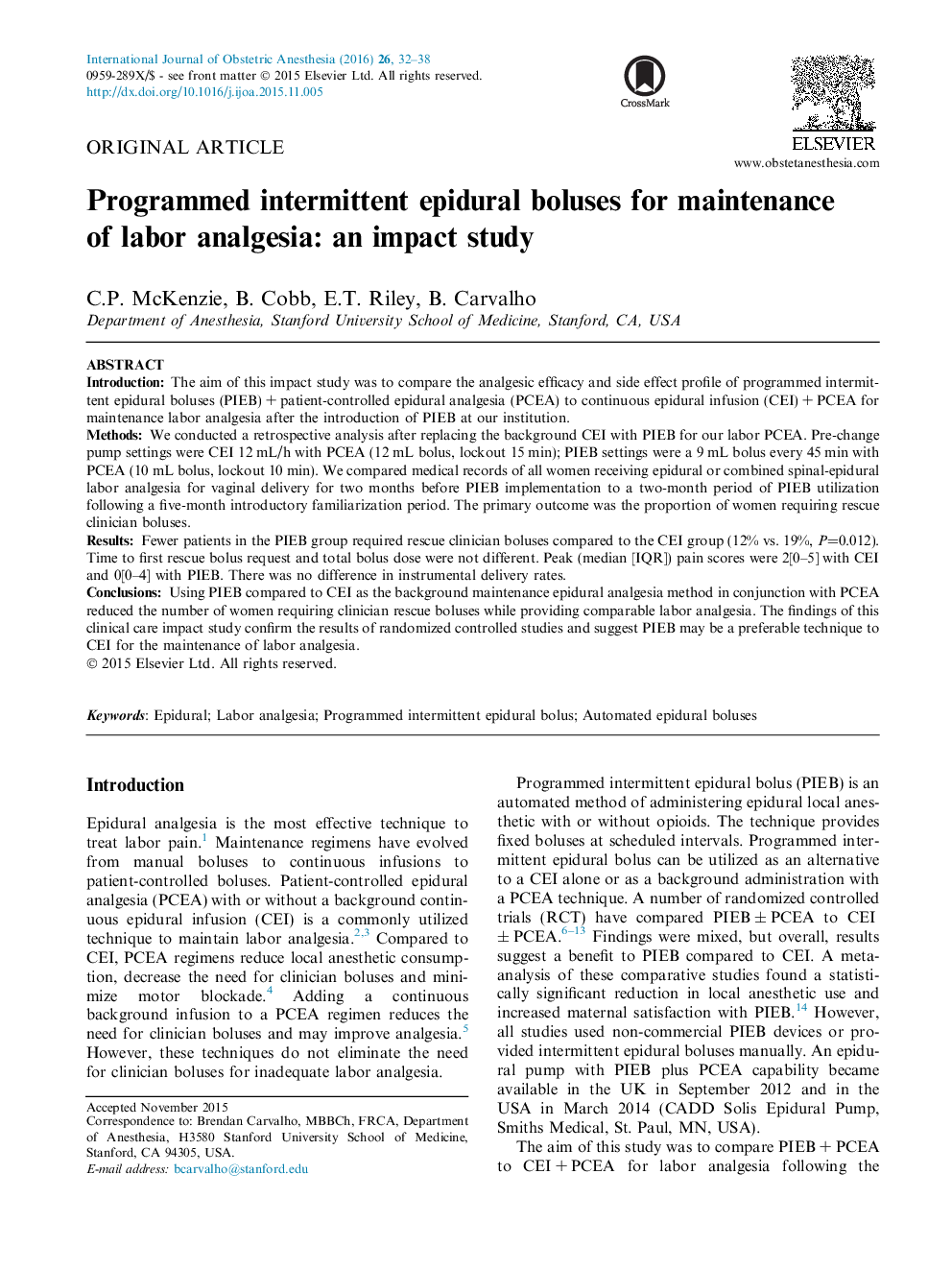| Article ID | Journal | Published Year | Pages | File Type |
|---|---|---|---|---|
| 2757433 | International Journal of Obstetric Anesthesia | 2016 | 7 Pages |
•Labor analgesia with PIEB + PCEA vs. CEI + PCEA were compared retrospectively after implementation.•We contrast findings to previous randomized controlled trials comparing PIEB to CEI.•PIEB + PCEA reduced rescue clinical boluses while providing comparable analgesia.
IntroductionThe aim of this impact study was to compare the analgesic efficacy and side effect profile of programmed intermittent epidural boluses (PIEB) + patient-controlled epidural analgesia (PCEA) to continuous epidural infusion (CEI) + PCEA for maintenance labor analgesia after the introduction of PIEB at our institution.MethodsWe conducted a retrospective analysis after replacing the background CEI with PIEB for our labor PCEA. Pre-change pump settings were CEI 12 mL/h with PCEA (12 mL bolus, lockout 15 min); PIEB settings were a 9 mL bolus every 45 min with PCEA (10 mL bolus, lockout 10 min). We compared medical records of all women receiving epidural or combined spinal-epidural labor analgesia for vaginal delivery for two months before PIEB implementation to a two-month period of PIEB utilization following a five-month introductory familiarization period. The primary outcome was the proportion of women requiring rescue clinician boluses.ResultsFewer patients in the PIEB group required rescue clinician boluses compared to the CEI group (12% vs. 19%, P=0.012). Time to first rescue bolus request and total bolus dose were not different. Peak (median [IQR]) pain scores were 2[0–5] with CEI and 0[0–4] with PIEB. There was no difference in instrumental delivery rates.ConclusionsUsing PIEB compared to CEI as the background maintenance epidural analgesia method in conjunction with PCEA reduced the number of women requiring clinician rescue boluses while providing comparable labor analgesia. The findings of this clinical care impact study confirm the results of randomized controlled studies and suggest PIEB may be a preferable technique to CEI for the maintenance of labor analgesia.
